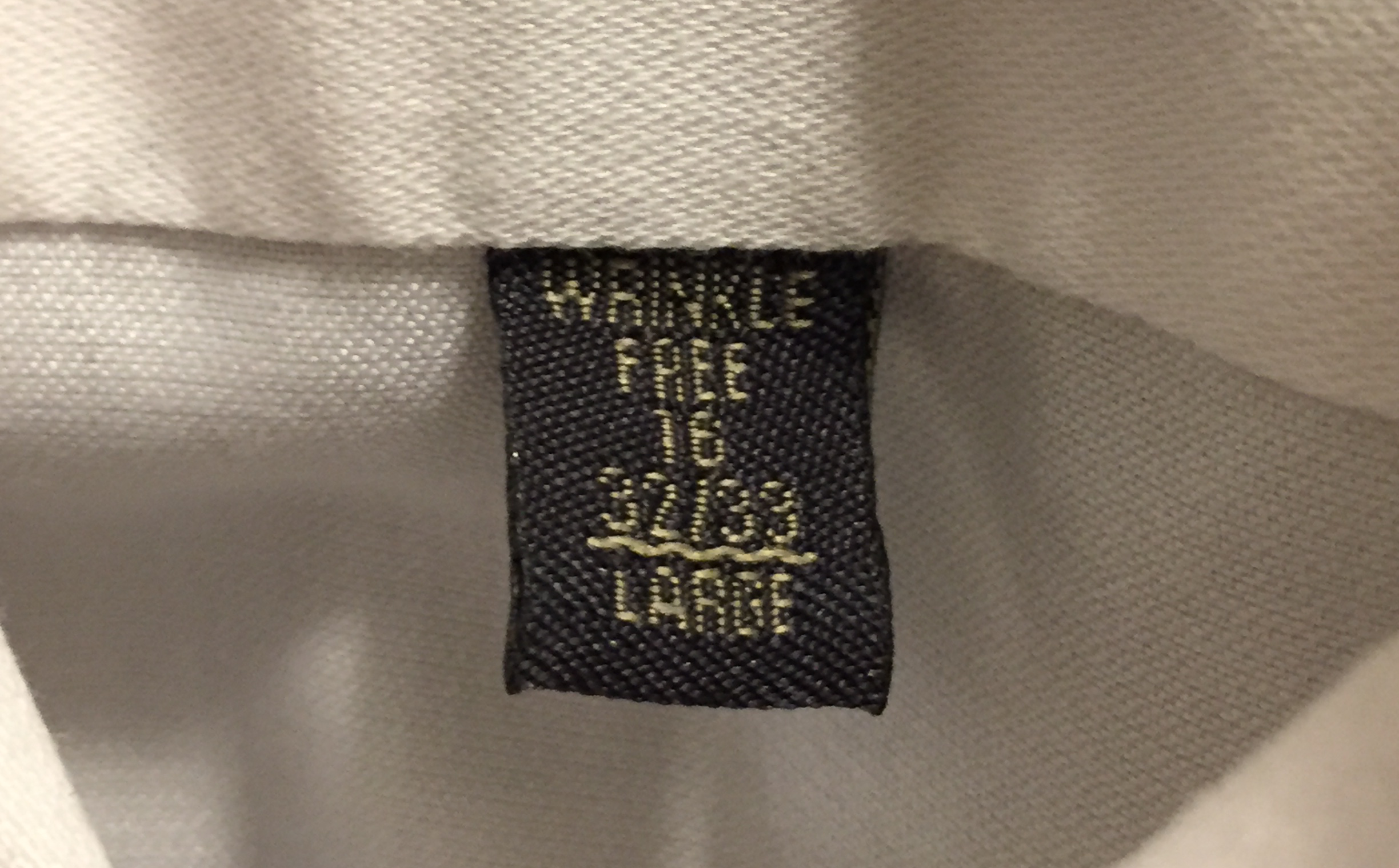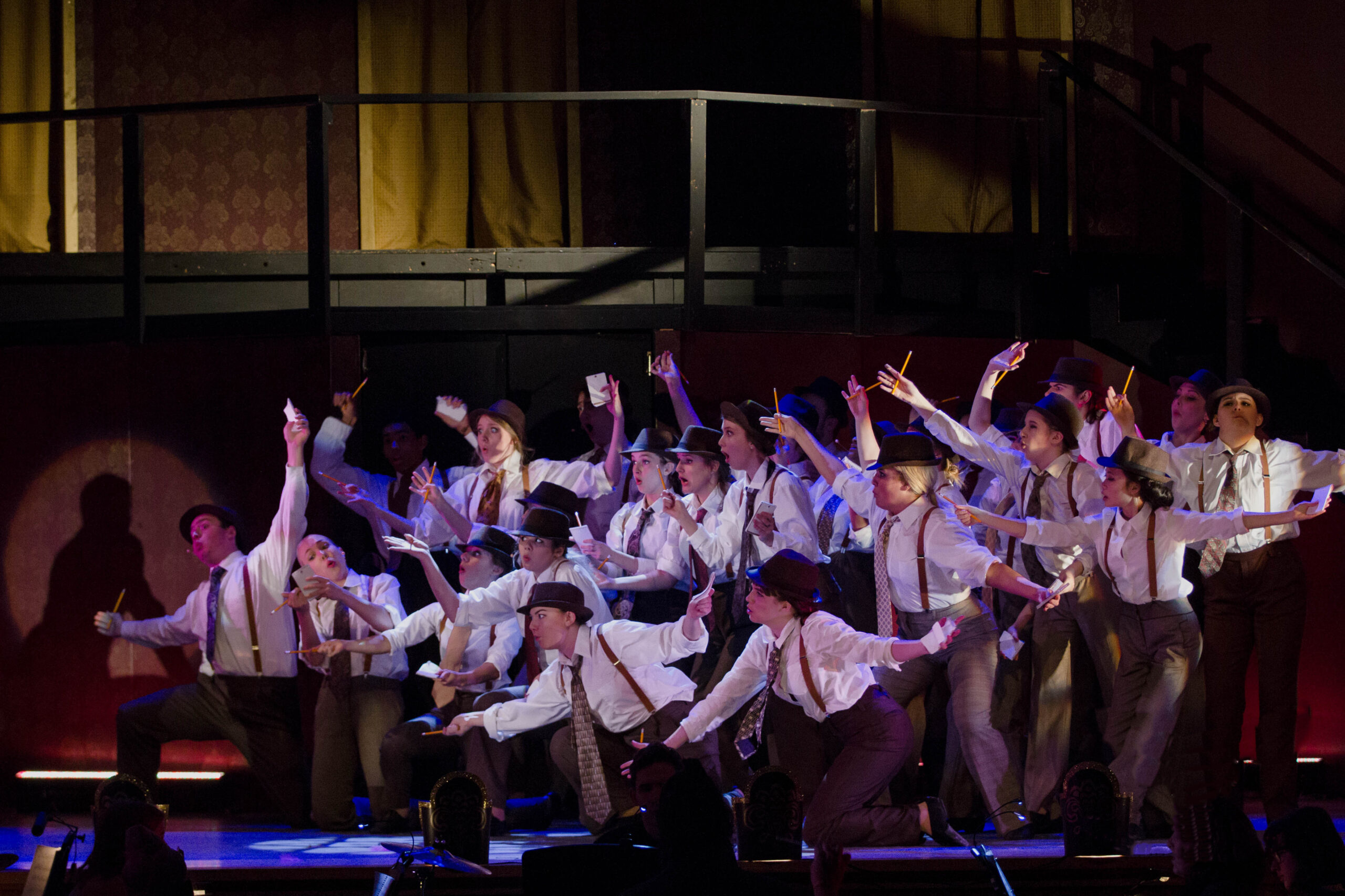Chicago Ensemble Costumes
For Chicago, we needed to costume ensemble boys for multiple similar numbers. I found that it was easiest to take “kit” approach. This enabled the director to make last-minute changes to the male ensemble costumes with little or no extra last-minute work.
The director wanted a classic 1920’s look for her interpretation of Chicago. I worked with her to determine the general look. We decided that the male ensemble costumes would be based around brown pants and white shirts, with suspenders and a fedora. Then we compiled a list of the “kit” components all boys would need:
- Brown wool pleated and cuffed pants
- White (non button-down) dress shirt
- White t-shirt
- Muted color tie
- Suspenders (Brown)
- Fedora (Brown solid or pattern)
I then made a one-page chart that showed each male ensemble member’s sizes. I carried this to thrift shops while hunting for the needed pieces. On most trips to the thrift shops, I was able to find around 5 pieces per trip. So, I made it a habit to visit shops frequently.
Buying hats, suspenders, and ties
Amazon and Ebay usually have a good selection of reasonably priced hats and ties. Be sure to order early, as many of the items from both of these sources are drop-shipped from China.Finding shirts
Pay attention to details of the period – For example, button-down collars were not used on dress shirts until the 1950s, so a show set in the 1920’s should not have shirts with button-down collars.
Remember that costuming will never be seen close-up. When selecting any costume piece, consider how it will look from the audience. Donated and thrift shop shirts are perfect for costuming. Much of the cosmetic wear on a shirt that leads the original owner to discard it won’t be noticeable at all from the audience.
Heavier fabric will hold up better during multiple dress rehearsals and performances. The best fabrics can usually be found in formal wear shirts, especially if you need white shirts.
Adjust a formal shirt
Formal shirts often come with double cuffs and/or French cuffs. French cuffs have a buttonhole on both sides of the cuff, and no button. They are meant to be used with cufflinks. If the shirt has a double cuff, meant to be folded up for wear.
To use a double-cuffed formal shirt for stage, cut each cuff at the fold, and hem the raw end.
To use a formal wear shirt without cufflinks, simply sew a shirt button on one side of the cuff over the buttonhole.
Determining shirt size

I use men’s shirts for all male cast members and also for any female cast member over 5’5”. Especially when dancing is involved, the longer cut of a men’s shirt makes it stay tucked better than shorter-cut shirts in women’s sizes.
Men’s shirts are sized by the neck measurement and the arm length. In the example, the neck size is 16 inches, and the arm length is 32/33 inches. Measure the neck around the base of the neck, and round up to the nearest ½” to get the measurement for the shirt. In the example, the shirt should fit someone with a rounded neck measurement of 16”. Shirt neck sizes come in ½” increments, so for someone with a rounded neck measurement of 16 ½”, you’d look for a 16 ½” shirt.
To take the arm measurement, have the actor bend their arm at the elbow with their hand resting at the navel. Measure from the center of the back of the neck, around the elbow, to 1” below the wrist bone. Round up to the nearest inch. Match this measure to the arm measurement on the label. In the photo example, the shirt should fit someone with an arm measurement more than 31” and less than or equal to 33”.
If you can’t find a shirt in the correct size, always err on the side of buying one that’s too large. A too-large shirt can always be taken in with a few simple alterations.
Estimating shirt sizes
If you’re not sure the size shirt you need, you can estimate based on these guidelines:
Click here for a downloadable pdf of this chart.

